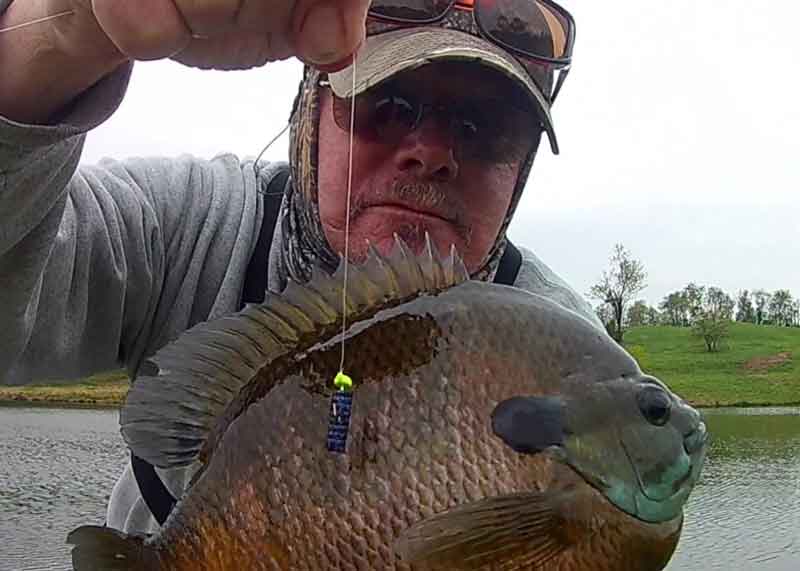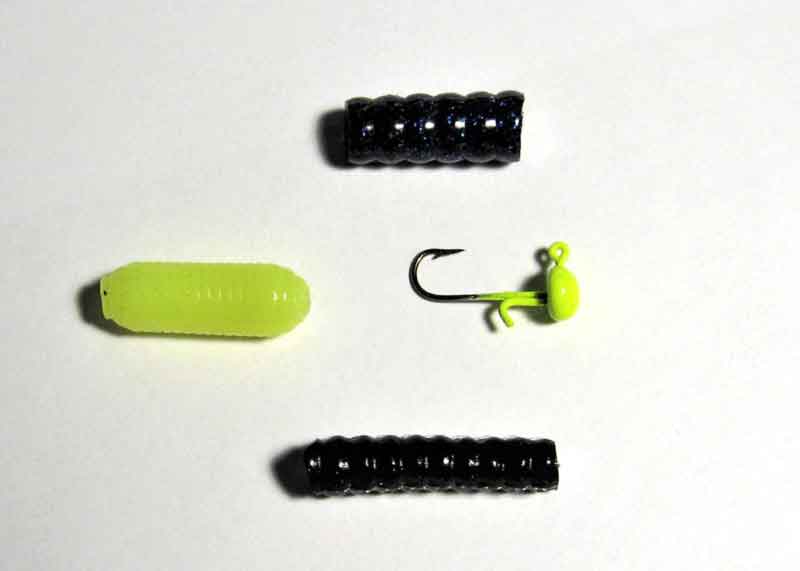Back in October of 2019, Ethan Dhuyvetter, a young angler-outdoorsman from Minnesota, began making the Mule Jig. With a name based on his grandfather’s love for the toughness and dependability of the common mules he had on their farm and a rigging similar to a "Ned rig," these half-moon shaped jigs do the standup routine when allowed to retrieve on the bottom and travel enticingly through the water column if reeled along with or without a bobber. Panfish and gamefish of all species dig ‘em, and they are making more than a splash on both social media and in and around the panfish angling circles, nationwide.

My first experience with the Mule Jigs was back in May of this year when smallmouth angler Barry Pierson invited me to one of his local ponds that had giant bluegills. The pond had not been fished for many years, and yes, the fish took a variety of lures on our ultralight rods. Barry used the 1/32nd ounce Mule Jig with a Z-Man trailer to catch many of the over-abundant largemouth bass that ran from 10 to 14 inches. Along about every dozen or so fish he would catch one of the outlandishly big bluegills that would attack his three-inch offering, admittedly a tad large even for big bluegills.
Seeing the size and even trophy potential in those catches, I switched almost immediately to my standard issue of hair jigs and tiny soft plastics on panfish jigheads of 1/64th ounce. Since I was actually targeting the slab gills, I figured these giants from a near-virgin fishery would go bonkers over anything I threw at them. Well, I caught fish, and some huge, near foot-long bluegills, but not near as many as I thought I might. And over the course of several trips to this incredible pond, it became apparent that they were catching on to some of my presentations. As it can be with hectic fishing over time, the fish eventually catch on and we, as anglers, need to experiment and find what ultimately works.
During our visits, Barry continued to knock the snot out of the bass population with high number catches on every outing. Along the way were some of the mammoth bluegills. I finally tied on a 1/80th ounce, mushroom-shaped Mule Jig in chartreuse and pierced it with an inch-long piece of plastic worm from the tapered end. Fished with and without a small float, the tiny Mule Jig had just what those fish wanted. There have been only a handful of times during my angling career when a lure or presentation was so dramatically superior to the others of the day — this was one of them.
The tiny, wire “bait keeper” attachment on the tiny Mule Jigs of 1/32nd, 1/64th, and even 1/80th ounce heads enable one to present any variety of micro-sized plastics for an extended period. Solid hooksets were the norm as even some of the light-striking bluegills were buttoned up well. Indeed, one might think that this untapped fishery would respond to any offering and, for a period of time, it did. But even this stellar water body showed quirks and twists that called for a different approach that improved the fishing. Admittedly, I may never enjoy another day of bluegill fishing comparable to the first day I tried the Mule Jig.

For the next few weeks I decided to give this option a try on some of my local waters near home. As a search lure for bedding or pre-spawn panfish, the Mule has a kick that reflects its name. I could cast and retrieve slowly along the bottom with gentle hops or lifts, and anxious bulls would tap the jig slightly at times, then hit with sledgehammer force on the very next cast. I like the way that the wire keeper holds plastics for a long time. Still, after several big panfish or a few bass, plastic additions need to be replaced, as with all jigs. I was delighted to land numerous trophy-class pumpkinseed and hybrid sunfish on the Mule and was rewarded with bass and slab crappie as well.
You can also tip the Mules with your favorite live bait when the going gets tough. The “head-down, tail-up” appearance can replicate tiny baitfish or minnow species invading a spawning bed, provoking hard strikes from bigger panfish. Tip it with Gulp! Minnows or live mealworms and see what happens.
The whole concept of Ned Rigging panfish has likely been done elsewhere in the world, and perhaps with differing jig styles and retrieve options. Additionally, I seldom spout off about products or new-to-me items unless they seem to be truly unique or cutting edge. But I think that Ethan Dhuyvetter has gotten on to something here that could be a viable weapon for all pan-fishermen, regardless of conditions or circumstance. It has also shown promise on stream trout species and smallmouths. Check out his lineup of Mule Jigs and add another tactic to try during your panfishing/trout and small stream adventures.
-By Jim Gronaw